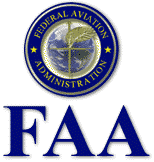Your Wallet Is Likely Involved
 You never get a bill for it, and there’s no entry for it on your books or your tax form, but that doesn’t mean access to the National Airspace System is free. And just how (perhaps more important, who’s) to pay for the increasingly expensive system was the subject of invitation-only meetings between FAA officials and aviation industry representatives last Monday and Tuesday. Nothing was resolved, but FAA spokesman Greg Martin told AVweb aviation is changing and the FAA must adapt its method of doing business to meet forecast increases in traffic — while revenues decrease. “To suggest that the status quo remain in place is appallingly naive,” Martin said in an exclusive interview with AVweb. “It just doesn’t add up.” The FAA maintains that a number of divergent factors have precipitated the current funding situation. The FAA gets funding from two basic sources, the General Fund (where your check went on April 15) and the Airport and Airway Trust Fund, which is supported by fuel, passenger and cargo taxes. The way most in aviation have generally understood the two revenue streams is that John Q. Public pays for the day-to-day operations of the agency while the direct consumers (notice we didn’t say users) of the system pay for infrastructure improvements through the taxes paid into the trust fund. However, there are some interpretations that suggest the distinction isn’t black and white and in recent years the agency has dipped increasingly into the trust fund for wages, paper clips and toilet paper, diverting those funds from runways, navaids and airport projects.
You never get a bill for it, and there’s no entry for it on your books or your tax form, but that doesn’t mean access to the National Airspace System is free. And just how (perhaps more important, who’s) to pay for the increasingly expensive system was the subject of invitation-only meetings between FAA officials and aviation industry representatives last Monday and Tuesday. Nothing was resolved, but FAA spokesman Greg Martin told AVweb aviation is changing and the FAA must adapt its method of doing business to meet forecast increases in traffic — while revenues decrease. “To suggest that the status quo remain in place is appallingly naive,” Martin said in an exclusive interview with AVweb. “It just doesn’t add up.” The FAA maintains that a number of divergent factors have precipitated the current funding situation. The FAA gets funding from two basic sources, the General Fund (where your check went on April 15) and the Airport and Airway Trust Fund, which is supported by fuel, passenger and cargo taxes. The way most in aviation have generally understood the two revenue streams is that John Q. Public pays for the day-to-day operations of the agency while the direct consumers (notice we didn’t say users) of the system pay for infrastructure improvements through the taxes paid into the trust fund. However, there are some interpretations that suggest the distinction isn’t black and white and in recent years the agency has dipped increasingly into the trust fund for wages, paper clips and toilet paper, diverting those funds from runways, navaids and airport projects.
You never get a bill for it, and there’s no entry for it on your books or your tax form, but that doesn’t mean access to the National Airspace System is free. And just how (perhaps more important, who’s) to pay for the increasingly expensive system was the subject of invitation-only meetings between FAA officials and aviation industry representatives last Monday and Tuesday. Nothing was resolved, but FAA spokesman Greg Martin told AVweb aviation is changing and the FAA must adapt its method of doing business to meet forecast increases in traffic — while revenues decrease. “To suggest that the status quo remain in place is appallingly naive,” Martin said in an exclusive interview with AVweb. “It just doesn’t add up.” The FAA maintains that a number of divergent factors have precipitated the current funding situation. The FAA gets funding from two basic sources, the General Fund (where your check went on April 15) and the Airport and Airway Trust Fund, which is supported by fuel, passenger and cargo taxes. The way most in aviation have generally understood the two revenue streams is that John Q. Public pays for the day-to-day operations of the agency while the direct consumers (notice we didn’t say users) of the system pay for infrastructure improvements through the taxes paid into the trust fund. However, there are some interpretations that suggest the distinction isn’t black and white and in recent years the agency has dipped increasingly into the trust fund for wages, paper clips and toilet paper, diverting those funds from runways, navaids and airport projects.


































